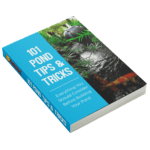You know, purchasing Koi or any other pet is a pretty fun experience, but you have to remember that it or they are living beings and will need proper care. Because of this you should make sure that your pond will be able to accommodate the Koi your purchase without breeching the limitations of your pond and its mechanical systems.
One of the things you may also want to consider is watching a particular Koi before actually purchasing it. Of course this comes with the risk of someone else actually purchasing it before you get to, but if you keep notes on several Koi at your local dealer, you may find yourself with a better quality and better looking Koi than if you had just pulled one out of a batch of fry.
You will also have to decide where you will purchase. They are Koi farms where they Koi are either bred or imported several times per year and there are retail locations that purchase from the farms on a more regular basis. Where you might have more a selection at a farm, you will have multiple selections per year from a retailer.
They say that the best quality Koi are imported from Japan in November and December. Typically, water temperatures are lower and can contain more oxygen for transport at this time and harvesting actually ends in October there. Typically stateside Koi farms keep the same sort of breeding cycle if they breed their own.
When you choose a place to purchase from, make sure that the staff is knowledgeable about their stock. They should be willing to answer and questions you have about the fish. Take a look at the state of their ponds. The ponds or holding tanks should be well filtered and clean.
Being a Koi enthusiast, you should remember though, that clean looking water is not necessarily clean. Smell the water too. Though this method is not a perfect science either, sometimes you can determine if there might be a problem. Watch the fish for any signs of stress too.
When you decide on a fish that you like, watch it for a while. Pay attention to how it swims and moves. Make sure it is not bumping into things and that its movements are not sporadic. Koi swim in a very fluid motion and look very graceful as they move.
Look at the way the fish breathes. A Koi breathes slow and regular and you should see this in both gills. Gills that are flared out are a sign of sickness. Check the fish for any appearance of white blooms on the skin of the Koi, or raised scales, holes, cloudy eyes. These are also signs of problems with the fish.
You should ask a staff member to separate the fish you like from the rest. Usually they will put the Koi into a tub for this purpose and allow you to view the fish more closely. Watch the way the person handles the Koi. This will also tell you how capable they might be.
When catching a Koi for close inspection, a flat pan net is usually used and the fish is encouraged to swim into the tub by itself. This method is less stressful to the fish and causes virtually now physical damage.
In the tub, you can look more closely at the fish for the things mentioned above. Here you can also get a closer look at the fins for parasites and such too. You do not want to bring an infested Koi back to your healthy pond and risk the infection of all of your stock.
Once you have decided upon a Koi, you’ll want to make sure you transport it properly. It is recommended that you use a large bag for the fish and that the dealer oxygenate the bag as well. I would also ask for a box to contain the bag and maybe even call ahead to make sure one is available.
You do not want to let the fish in its bag roll around the inside of your car on the way home. This can seriously stress the Koi. I would further suggest that you bring a blanket to cover the box with too. Being in a dark environment will calm the Koi and it will be less likely to thrash about and possibly injure itself.
There are two schools of thought here in regards to quarantining fish. Some say that this causes undo stress in the fish in that you end up having to move it twice and that the repercussions of these actions might not actually be seen until a lot later, months and maybe even years.
Others say that it is best not to introduce new fish into your pond because there may be a risk of contaminating the entire stock you already have. While this is a possibility, you should consider that typically fish that are imported in, they are quarantined at that time. Though this does not guarantee that you would not experience problems, it just gives you something to consider.
Ultimately, it is best to use your head when choosing and purchasing a new Koi. This fish will be with you for a long time, so you want to give it the best chances it can get for survival.


